Mackinac
Bridge, Michigan, USA
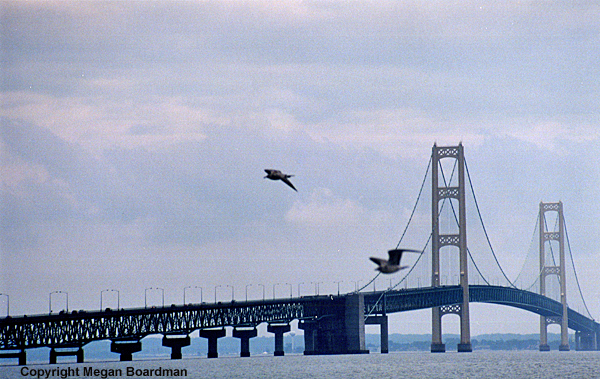
Architect
|
David B. Steinman
|
Date
Built
|
Completed 1957
|
Location
|
St Ignace
|
Description
|
When the Mackinac
Bridge was completed, it was the world's
longest suspension bridge when measured
between its anchoring points. The
Golden Gate Bridge had a longer central
span between towers but the Mackinac had a
longer total length. It is still the
longest twin-towered suspension bridge
between anchors in the western hemisphere.
Its total length is 3,038 metres and its
width 20.9 metres accommodating the 4
lanes of traffic on Interstate
75. The height of the roadway
at mid-span is approximately 200 feet
above water level. The towers rise
up to 168.25 metres above the water.
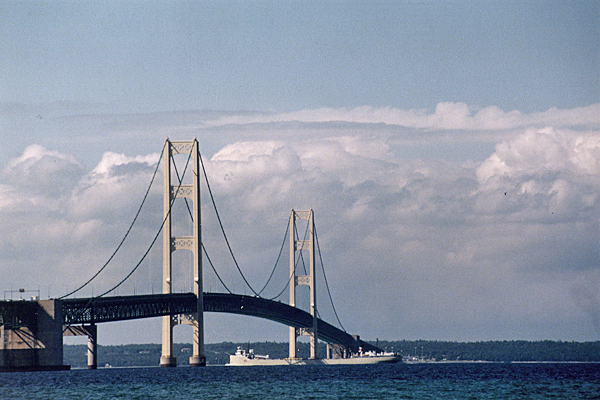
Known affectionately
as the "Mighty Mac" or the "Big Mac", it
spans the Strait of Mackinac, the narrow
point at which Lakes Huron and Michigan
join. It links the communities of
St. Ignace and Mackinaw City. The
desire to span the gap, that had
previously required a ferry connection,
was mooted as early as 1880 but it took a
long time to make it a reality.
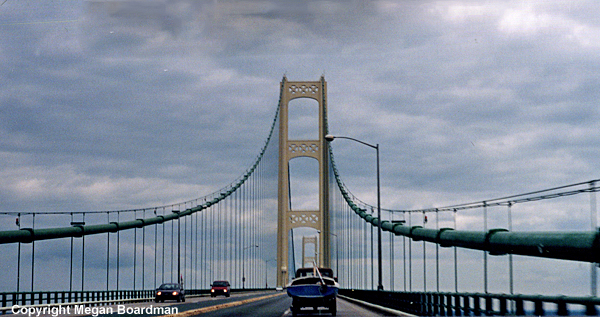
As the Mackinac Bridge Authority website
explains, "... All suspension
bridges are designed to move to
accommodate wind, change in
temperature, and weight. It is
possible that the deck at center span
could move as much as 35 feet (east or
west) due to high winds. This would
only happen under severe wind
conditions. The deck would not swing
or "sway" but rather move slowly in
one direction based on the force and
direction of the wind. After the wind
subsides, the weight of the vehicles
crossing would slowly move it back
into center position."
They add that, "
During the construction of
the Mackinac Bridge in the 1950's,
five men unfortunately lost their
lives. One man died in a diving
accident; one man fell in a caisson
while welding; one man fell into the
water and drowned; and two men fell
from a temporary catwalk near the top
of north tower."
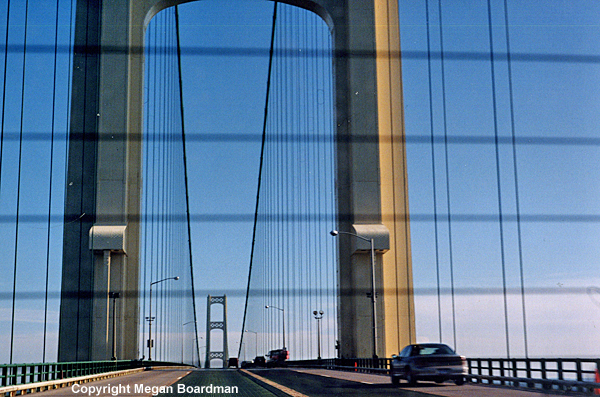
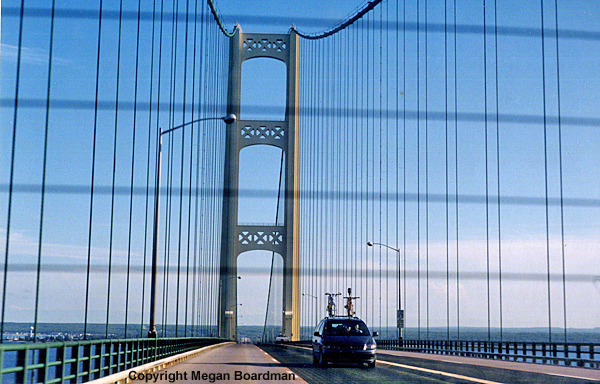
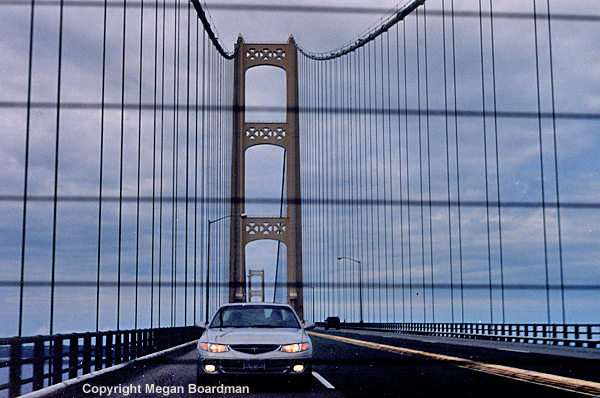
|
Close
Window

|



